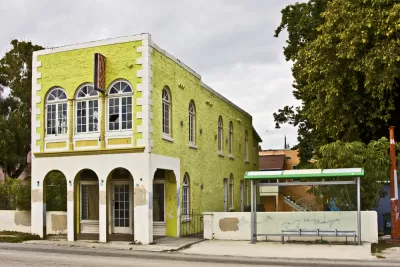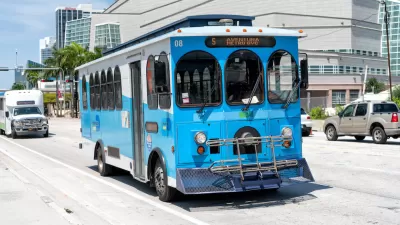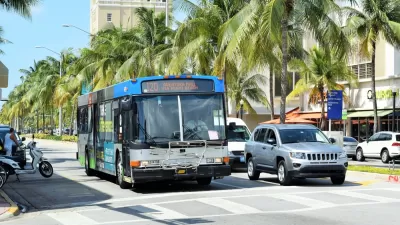The company that pays to build and maintain bus shelters in Miami-Dade County isn't happy about plans to bring in another company to build wi-fi kiosks at transit stops.

"A cutting-edge network of interactive digital kiosks for Miami-Dade’s transit system may cost passengers an old-fashioned perk: shelter from the rain and the sun," reports Douglas Hanks.
The unfortunate either/or scenario is the result of an ongoing dispute with Outfront Media, the outdoor media company that builds county bus shelters in exchange for ad space. Outfront media "recently warned it may have to abandon the venture if a rival company installs as many as 300 Wi-Fi-enabled kiosks at bus stops across the county."
Another company, called Civiq, already won a deal to install Wi-Fi kiosks back in January. More details on that deal are available in article from January 2017 by Josh Baumgard.
Hanks also notes that Civiq is already in hot water with Miami-Dade after missing milestones in the agreement: "It has yet to turn in requested locations for 150 kiosks, or installed Wi-Fi equipment in 10 county buses, as required under its deal." The article also includes in-depth discussion, with multiple sources, about the relative importance of Wi-Fi and bus shelters to the transit user experience.
FULL STORY: Stay dry or stay online? At bus stops, it’s free Wi-Fi versus shelters.

Planetizen Federal Action Tracker
A weekly monitor of how Trump’s orders and actions are impacting planners and planning in America.

Restaurant Patios Were a Pandemic Win — Why Were They so Hard to Keep?
Social distancing requirements and changes in travel patterns prompted cities to pilot new uses for street and sidewalk space. Then it got complicated.

Map: Where Senate Republicans Want to Sell Your Public Lands
For public land advocates, the Senate Republicans’ proposal to sell millions of acres of public land in the West is “the biggest fight of their careers.”

Maui's Vacation Rental Debate Turns Ugly
Verbal attacks, misinformation campaigns and fistfights plague a high-stakes debate to convert thousands of vacation rentals into long-term housing.

San Francisco Suspends Traffic Calming Amidst Record Deaths
Citing “a challenging fiscal landscape,” the city will cease the program on the heels of 42 traffic deaths, including 24 pedestrians.

California Homeless Arrests, Citations Spike After Ruling
An investigation reveals that anti-homeless actions increased up to 500% after Grants Pass v. Johnson — even in cities claiming no policy change.
Urban Design for Planners 1: Software Tools
This six-course series explores essential urban design concepts using open source software and equips planners with the tools they need to participate fully in the urban design process.
Planning for Universal Design
Learn the tools for implementing Universal Design in planning regulations.
Heyer Gruel & Associates PA
JM Goldson LLC
Custer County Colorado
City of Camden Redevelopment Agency
City of Astoria
Transportation Research & Education Center (TREC) at Portland State University
Camden Redevelopment Agency
City of Claremont
Municipality of Princeton (NJ)




























